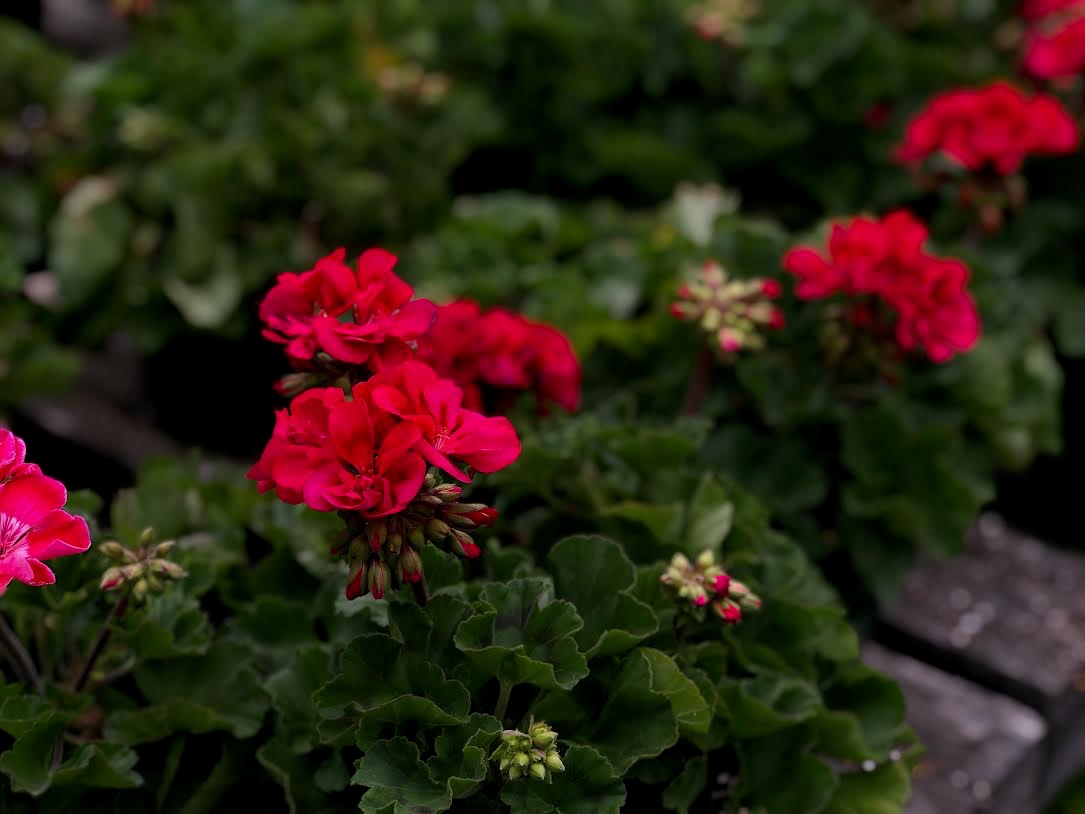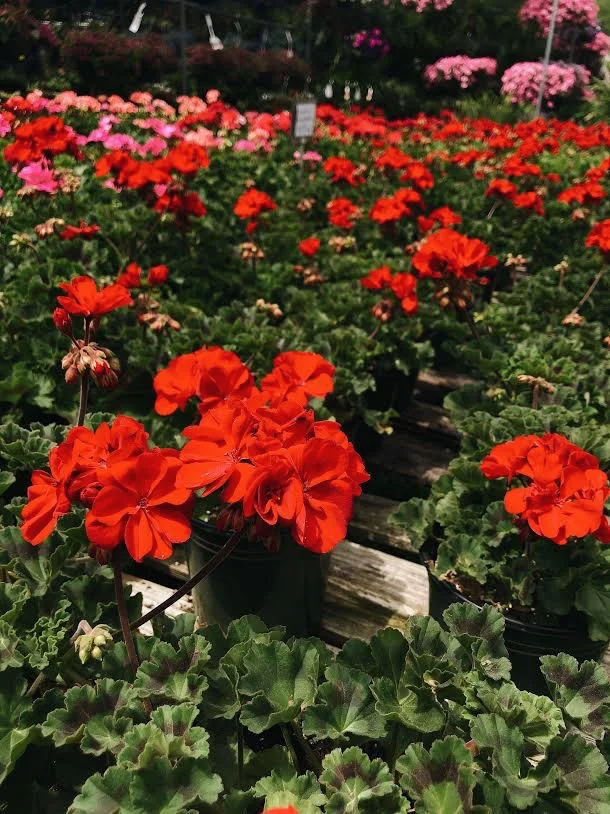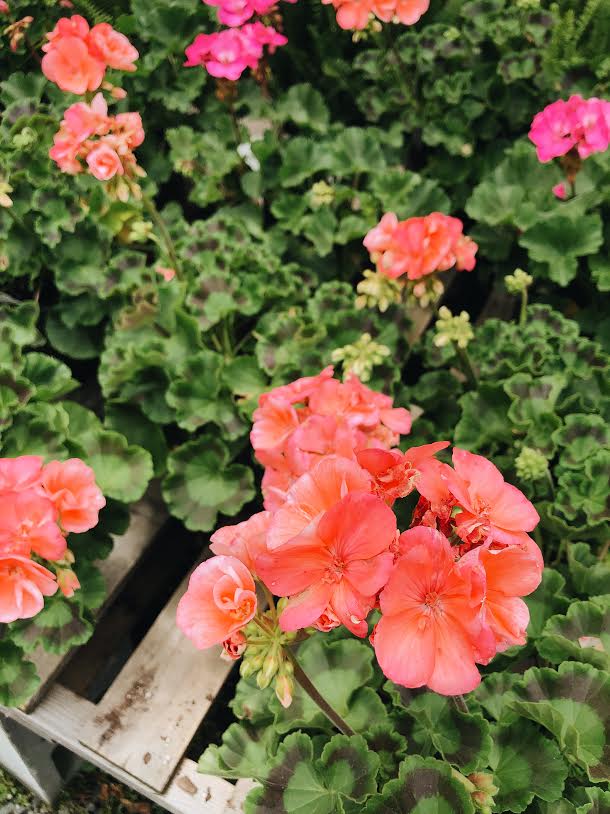
B L O G
Growing the Herb Garden of Your Dreams
Whether you’re adding fresh rosemary to your chicken recipe, or infusing your freshly squeezed lemonade with lavender, we’ve got all of the tips and tricks ready for you to start the herb garden of your DREAMS!
Do you love herbs? Well we do too! Herbs not only add delicious flavor to your favorite recipes, but they also have medicinal, homeopathic properties that your grandmother has been using for ages. Whether you’re adding fresh rosemary to your chicken recipe, or infusing your freshly squeezed lemonade with lavender, we’ve got all of the tips and tricks ready for you to start the herb garden of your dreams.
How to Choose Your Plants
Before choosing your herb garden plants, we recommend you start small, and then work your way up from there. Learn to “get the hang” of growing herbs before committing to a HUGE garden. Because herbs do have different needs than other plants, and while normally easier, they can sometimes take some getting use to.
Here is some info and a few examples of how we use our favorite herbs:
Rosemary: promotes increased concentration and digestion, but also a delicious addition to chicken.
Basil: known for it's use in italian cuisine (especially pesto), rich in antioxidants, and fast growing.
Mints: have many varieties. Can take over a garden, so they are best grown in containers. Also make great teas.
Oregano: is DELICIOUS when infused in honey or butter.
Lavender: is also great for teas. Also fun to make DIY lavender bath salts and candles.
Parsley: makes a fresh addition to salads and meats.
Perennial Options
If you’re wanting some perennial options (a plant that will remain more than one year) specific for our zones in North Carolina (6a-8a), here are some great options for you:
Catmint: cats LOVE this plant (if you don’t like cats, don’t plant this herb).
Also yummy as a tea.
Rosemary: (Rosmarinus Officinalis) looks beautiful and smells amazing. Can be used for not only culinary purposes, but also for decorations at Christmas.
Silver Thyme: has a pretty pink blossom in the summer with slight lemon-scented leaves.
Chives: grow back even bigger every year, and have a pretty purple flower.
Oregano: will return if you cut it back in the fall and cover with mulch.
Choose Your Pots (Or Beds)
If choosing pots, remember that the larger the pot, the larger the crop. For example, mint grows like CRAZY, so if you’re wanting a lot of mint, we recommend planting in a larger pot. If growing in the ground, keep in mind that some plants are more invasive than others, so protect the more delicate plants by keeping the invasive herbs away from them.
Use High Quality Soil
Start your herb garden out on the right foot by choosing a good quality soil. Daddy Pete’s Soil is a great organic option that we carry at our stores in North Carolina, which we mentioned here in this post. And remember, you are most likely going to be eating these herbs, so try and avoid spraying them with a chemical fertilizer. A great alternative to chemical fertilizer would be mixing in some compost to the soil when planting.
Watering Needs
Herbs are not like houseplants or succulents because they need a moderate amount of water every day, depending on the specific herb. And usually the best time to water is in the early morning, which allows the sun to dry the water from the leaves and prevent mold and mildew growth. Be careful not to overwater, as some herbs tend to gravitate toward root rot (like Sage).
Choose Your Location Wisely
Some herbs like a cool, shady spot, and some like a hot, sunny location, so remember to check the tag of your herb before planting. Another tip to keep in mind, in regard to location, is this: keep your herbs easily accessible. For example, you don’t want to be running through a summer rainstorm (or maybe you do) to go and cut the lavender from the garden that you forgot to get earlier that day.
Give It A Haircut… aka a pruning
We like to think of pruning herbs as “giving them haircuts”. If you trim the TOP of your herbs, more will grow back in its place, creating a full and healthier plant. You also want to cut from the top of your herbs, not the bottom. The bottom leaves are the sturdy base to your herb, so don’t cut those gorgeous leaves. And remember to trim often, because some herbs tend to die after blossoming like Cilantro. The leaves age, dry up, and fall off, leaving you with a twig and no leaves, which is sad and disappointing.
Do you enjoy planting herbs and using them in your recipes? If so, what’s your favorite herb and what recipe do you use them in? We’d love to hear about it in the comments below!
Please note: we truly hope you’ll come visit with us, and we would also love to see your gardening photos as well, so tag @gardenvalleyfarmersmarket in your posts, and don’t forget to use the hashtag #gardenvalleyfarmersmarket and show us your herbs!
And lastly, if you find this information helpful, we’d love it if you would support us by sharing with your friends.
Happy Herb Planting!
Thank you so much for joining us here. For more information on what Garden Valley Farmers Market is about, you can visit us here. If you’re wanting to visit with us, come by any of our five North Carolina locations. If you’re wanting to follow along with us, you can do so either on our Facebook, Youtube, or our Instagram. If you’re wanting to earn rewards and be easily connected with us, download our new App. And if you’re wanting to check out our other recipes and blog posts, or are needing more inspiration, follow us on our Pinterest. We’d love to have you join us in our journey of planting better, eating better, and living better.
Much love,
Your Garden Valley Farmers Market Team
5 Ways To Attract Pollinators To Your Garden
The birds, the bees… and the butterflies: these are just a FEW of the many pollinators on this earth that serve such a secretly beneficial and beautiful purpose on this earth. But why do we need to make an effort to attract them to our gardens? Here are 5 ways to attract pollinators to your garden.
The birds, the bees...
and the butterflies: these are just a FEW of the many pollinators on this earth that serve such a secretly beneficial and beautiful purpose on this earth. But why do we need to make an effort to attract them to our gardens? Because pollinators are responsible for three-quarters of the world's food crops and many of the foods that we enjoy on a daily basis would not be existent without them. Because plants can not exist without the process of pollination. And plants are what's responsible for the air that we breathe and the food that we eat. So yes, pollinators are extremely important, because without them, our life as we currently know it, would not be.
Did you know…
+ that some bees travel up to 3 miles just to visit your flower garden?
+ that hummingbirds can visit up to 1000 flowers each day?
Crazy, right? And with all of this work that they do, they need our help, and there are some things that we can do to give them an extra boost to their day.
So here are five tips on how to attract
pollinators to your garden:
p l a n t a n a t i v e g a r d e n
A native garden is basically just a garden filled with plants that are naturally found growing in your region. For example, honeysuckle is a naturally occurring shrub/bush that grows here in North Carolina, so adding that to your garden this spring/summer would greatly benefit your pollinators!
Also, some bees are what's called "specialists", meaning that they can only feed their larvae the pollen from a specific native plant. So without these plants, the bee colony would not survive.
If you're wanting to attract more hummingbirds, aim for tubular and long shaped blooms with your flower choices, something like Daylillies or Petunias.
c h o o s e t h e c o l o r
Did you know that these hard working species are actually attracted to certain colors?
To attract bees… bees LOVE purple and blue flowers. Some great options, that we do carry at Garden Valley Market, would be Lavender, Petunias, and Verbena.
To attract Hummingbirds + Butterflies… we recommend colors of red, yellow, pink, and orange! Butterflies LOVE Lantana, and Hummingbirds love Petunias, Fuscia, and Lillies!
p r o v i d e w a t e r + r e s t
With how hard working these pollinators are, you better believe that they need a place to rest and refuel, and providing these places for them to do so is going to keep them coming back! They all need a place of still water to drink from. You can add some pebbles to a bird bath to make a great landing place for the insects so they won't drown.
a v o i d i n s e c t i c i d e s
Did you know that insecticides actually kill pollinators? KEEP So you might be TRYING to kill those pesky bugs eating your plant, but you're actually harming those beautiful butterflies and busy bees in the process. And insecticides are one of the reasons that the bee population has decreased to greatly!
So instead of going to insecticides first, try and google some natural alternatives and see if those work first. (There are also great organic options online that are safe for the environment, as well as pets and humans.)
k e e p t h e w e e d s
It’s early spring and we’re super excited to get our lawns looking fresh and green again… but maybe think twice about removing those dandelions and other weeds growing! Because these weeds are often the first flower that the pollinators source from when not many blooms have started yet! Instead, let them grow a tad bit longer until your garden starts coming along.
Let us know how you attract pollinators to your yard by commenting below!
We have MANY varieties of flowers for you to choose from at our stores, and a unique and beautiful selection of different shapes and colors. So come get your beautiful flowers grown just for your pollinators at home.
Thank you so much for joining us here. For more information on what Garden Valley Farmers Market is about, you can visit us here. If you’re wanting to visit with us, come by any of our five North Carolina locations. If you’re wanting to follow along with us, you can do so either on our Facebook, Youtube, or our Instagram. And if you’re wanting to check out our other recipes and blog posts, or are needing more inspiration, follow us on our Pinterest. We’d love to have you join us in our journey of planting better, eating better, and living better.
Much love,
Your Garden Valley Farmers Market Team
How To Care For Geraniums
Geraniums are a beautifully colorful and fragrant option to give you all the spring and summer gardening vibes. They have over 250 species, are low maintenance (once you learn their needs), and make a great addition to your garden…
Geraniums are a beautifully colorful and fragrant option that give you all the spring and summer gardening vibes. They have over 250 species, are low maintenance (once you learn their needs), and make a great addition to your garden.
When healthy, Geraniums are full of lush blooms and filled with green leaves, so they make a great addition to cover the base of shrubs. They are also beautiful in window boxes, in a hanging basket, in single pots on their own, or in an eclectic mixed container. And not only do these beauties smell amazing, but they also help to repel insects… mosquitoes in particular. Geraniums can be grown outside and indoors, making this plant very versatile.
DID YOU KNOW…
…that when most people think of geraniums, they are actually thinking of what is called a Pelargonium, and Pelargoniums are not a “true” Geranium. Because in 1789, Geraniums were separated into two genus species, one of them being Pelargonium. But for reference, we will refer to Pelargoniums as Geraniums for this article… because it’s easier to say and write.
How To Care for Geraniums
Geraniums have very specific needs, but once they are learned, you’ll see that these beautiful plants will thrive and be the next show stopper piece for your garden, front porch, or back deck.
Where to Grow.
+ Indoors. Geraniums need a minimum of moderate light indoors, but more blooms will be yielded if they receive heavy light. Also, if you’re more interested on growing Geraniums indoors, check out this blog post over on Balcony Garden Web.
+ Outdoors. If growing outside, place your Geranium in a spot that receives FULL SUN (minimum of 6 hours of sunlight). If you are in a climate where the temperature reaches above 90 degrees, you also might want to consider planting your Geranium where it receives morning sun, but afternoon shade.
When and How to Plant.
Plant your geraniums only after the threat of a frost has passed. You can check your individual tags on the specific type of geranium you have purchased, but generally, you will want to space them 8”-12” apart.
Soil.
Geraniums love a slightly acidic, well-draining soil. If planting in a pot, you can easily accomplish this by adding moss to your soil, and covering the base of your pot with rocks to allow for better drainage.
Watering.
Geraniums can be prone to root-rot, so you should only need to water them weekly. Allow the soil to dry out completely, and then give it a good soaking.
How to Water: Soak your geranium at the level of the soil of the plant thoroughly. Be careful to avoid getting the leaves and blooms wet. This can cause rotting/disease of the leaves and burning of the blooms (when in the sun).
Pruning.
You can prune Geraniums by pinching off the end of the stem. This allows for two new growths to happen in its place, and will also produce a more “full” looking bush.
So where can you even get these gorgeous plants? We have TONS of options available for purchase at each of our locations at Garden Valley Farmers Market. We are local to the following locations in North Carolina: Greensboro, Haw River, Graham, Elon, and Burlington. So stop by today, and see just how beautiful these gorgeous plants really are.
Comment below and tell us what your favorite colors are!



































